8 Major Ports in Ecuador
The Republic of Ecuador is a developing country located in the South American continent, bordering Colombia and Peru. It has a maritime border on the east, facing the Pacific Ocean and large reserves of oil and petroleum products which comprise the majority of its exports. Although most of its population lives in rural areas and is relatively impoverished, the country is the eighth biggest economy in the Latin American region.
Industries are concentrated in Guayaquil and Quito, the main commercial and administrative centres of Ecuador. The country is a leading exporter of Bananas and one of the biggest producers of cocoa. Site of the famous Inca civilization, Ecuador has a rich cultural heritage and two UNESCO world heritage sites.
Tourism contributes enormously to the nation’s GDP as people visit Ecuador for its beaches and resorts, nightlife, textiles and handicrafts. Ecuador has 3 commercial seaports and many small marinas and specialised oil terminals. Described below are the 8 major ports in Ecuador.
1. Port of Guayaquil
Guayaquil port is situated on Ecuador’s pacific coastline near the Gulf of Guayaquil. The main port and the country’s biggest city, it is also an industrial hub, home to multiple manufacturing units and fishing industries. Urban migration in the hope of better livelihood and standards of living has led to the mushrooming of slum dwellings, concentrated in the southern end of the city. It is linked with Ecuador’s capital, Quito through a railway line passing through Riobamba and Latacunga.
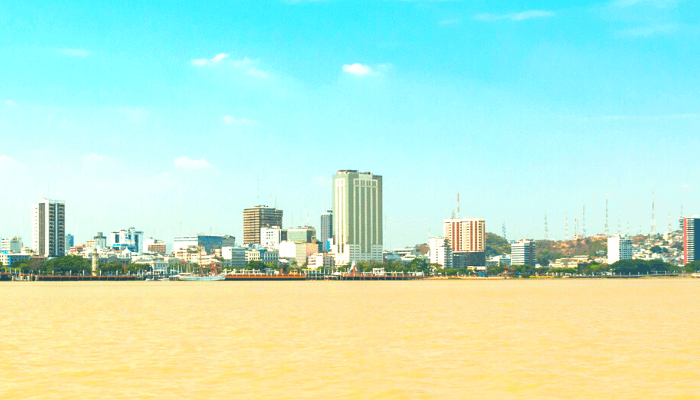
The local economy rests on the many sugar refineries, sawmills, foundries, tanneries, machine workshops, shrimp farming etc. The Port of Guayaquil handles around 93 per cent of Ecuador’s container traffic and 60 per cent of its total cargo.
It is one of the busiest ports in the Caribbean and the Latin American region exporting agricultural products like bananas, coffee, cocoa, rice, balsa, seafood, refined oil, molasses, and petroleum products. One of its biggest terminals called Andipuerto has exclusive rights for handling bulk grains, reefer containers and general cargo. Major imports consist of iron, steel, automobiles, machinery and wheat. Approximately 2000 vessels, 7,180,300 tonnes of cargo and 8,85,100 TEUs are handled at Guayaquil port every year.
Port Terminals
The international container terminal comprises three wharves, each stretching 185 metres and a 300,000 m2 storage area. The multipurpose terminal includes six 190 m berths with 70,000 m2 of warehouse space, including 4500 m2 for accommodating dangerous cargo and 3200 m2 for refrigerated goods.
The Bulk terminal has a 189 m long wharf, three silos and four warehouses for storing 3600 tonnes. A grain warehouse with a 30,000-tonne capacity and three 9000 m3 tanks for keeping heavy liquids like oil are also available.
2. Port of Esmeraldas

Located on the northwestern coast of Ecuador at the mouth of the River Esmeraldas, this medium-sized general and bulk cargo port enjoys a favourable position for shipping lumber, agricultural goods, raw material and consumer goods. It is the terminus for the trans-Ecuadorian oil pipeline linked with the nation’s northeastern oil fields. Around 12 per cent of the nation’s international trade is conducted through the port, totalling 850,000 tonnes of cargo annually.
Extensive facilities for loading and discharging fuel oil, gasoline, diesel and kerosene are present in the western port area. Primary exports consist of bananas and timber while main imports are pipes, machinery and steel billets. The port can accommodate ships weighing 40,000 to 100,000 DWT. A Free trade Zone housing businesses and shipping companies adjacent to the port facility.
It has a 200 m long breakwater, a 350 m long general cargo berth and a 185 m long container berth with an 11 m draft. An additional wharf accommodates fishing boats and barges and undertakes cabotage activities.
Terminal facilities
The crude oil terminal called the Balao terminal is located a few miles offshore. It has two oil refineries, an intricate network of pipelines and a recently added high-security system to prevent any accidents or leakage. It was opened in 1972 and can accommodate oil tankers weighing up to 300,000 tonnes.
The Tepre terminal has a CBM with three buoys connected to the offshore tank farm via submarine pipelines. Lastly, the Petroecuador products terminal is situated near the anchorage area, just 2 nautical miles from the shore and handles refined petroleum goods.
There is ample storage space including a 12-hectare paved area lying between the patios and the cellar. It has two warehouses covering 9340 m2 for storing steel coils and cement bags.
3. Port of Manta
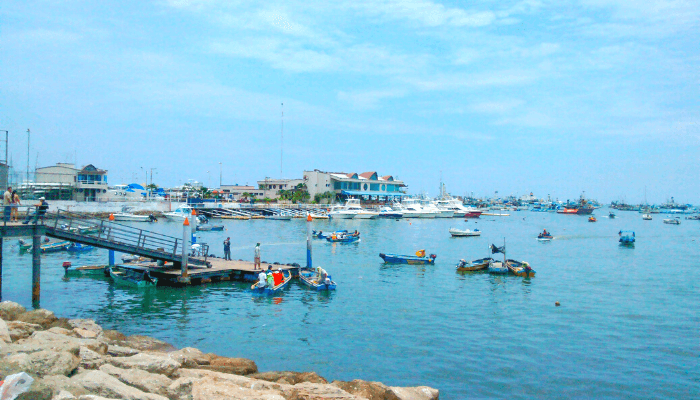
Manabi province is known for its abundant fisheries especially the processing of tuna in the small factories near the Manta port located on the northwestern shores of Ecuador. It is connected to the industrial region through the asphalt highway and is the only port capable of accommodating up to 9.8 m draught vessels despite tidal variations. It has a 1500 m long breakwater and a 175 m wide access channel.
A multipurpose port, it has facilities for handling cruise ships, RORO, container goods and seafood on its 600 m fishing vessel jetty. Other exports include coffee, cocoa, timber, consumer goods etc. The port is designed to handle 2 million tonnes of cargo, 50,000 TEUs and about 60,000 vehicles annually.
Its biggest advantage is its water depth, easily approachable berths and favourable central position which makes it a major distribution centre for automobiles in the northern and southern parts of Ecuador.
Port Characteristics
Manta has two port terminals, the International terminal and the Fishing and Cabotage terminal. The former is operated by the Manta port terminal company and handles solid bulk cargo like wheat, urea, fertilisers, cement, liquid cargo comprising vegetable oils, and general cargo consisting of machine parts and vehicles. The latter covers 22 hectares of land area and serves the industrial and commercial fishing fleet of the country.
The general cargo handling facility consists of a 155 m long conventional berth and a container berth covering 185 metres. Pilotage is compulsory for larger vessels while bunkering and freshwater services are also offered.
In 2020, the port handled 570,802 tonnes of dry bulk cargo and seafood, 100,580 tonnes of automobiles, machinery and equipment and 130,600 tonnes of hydrocarbons and refined oil.
The port has a 150,500 m2 storage area divided into 12 warehouses for keeping containers, vehicles and general cargo. It can accommodate around 5000 TEUs or 4000 vehicles.
4. Port of Bolivar
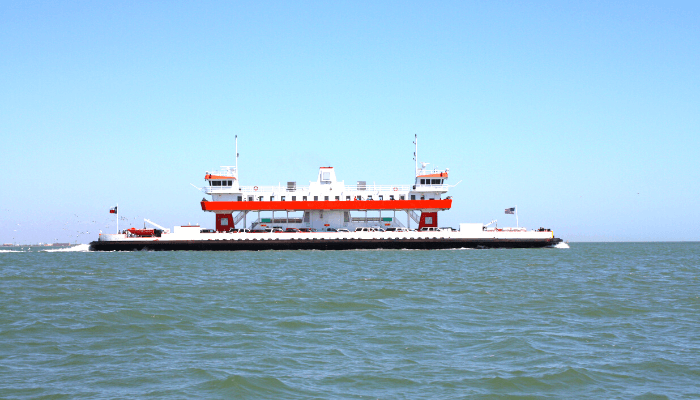
Bolivar port is located in the southernmost part of Ecuador in the El Oro province near the Estero Santa Rosa. It is a well-sheltered natural harbour with an expansive anchorage area for accommodating 10 vessels simultaneously. Lying amidst the Banana farms, Bolivar port is also known as the Banana port of Ecuador as it exports around 3 million tonnes of fruit annually.
The port city also has a prosperous shrimp industry. Apart from handling reefer cargo, it also exports dry cargo like concentrated copper and paper pulp and receives shipments of fertilisers and heavy machinery. Around 600 cargo vessels carrying 1,770,000 tonnes of cargo and 50,000 TEUs are handled at the port every year. For the first time, the port shipped 36,000 tonnes of copper concentrate to China in 2020.
Bolivar port has 5 berths with a total berthing line of 910 m and a container terminal with a designed capacity for 600,000 TEUs. Its container freight station has 110 reefer connections and the multipurpose terminal handles 300,000 grains and 200,000 minerals.
In 2020, the authorities decided to expand the port facilities by constructing additional container storage yards, new refrigerated warehouses and access roads. Consisting of five phases, the first phase of expansion undertaken by Yilport would be completed by the end of 2023, increasing the port’s capacity to 1 million TEUs.
5. Bahia de Caraquez Port
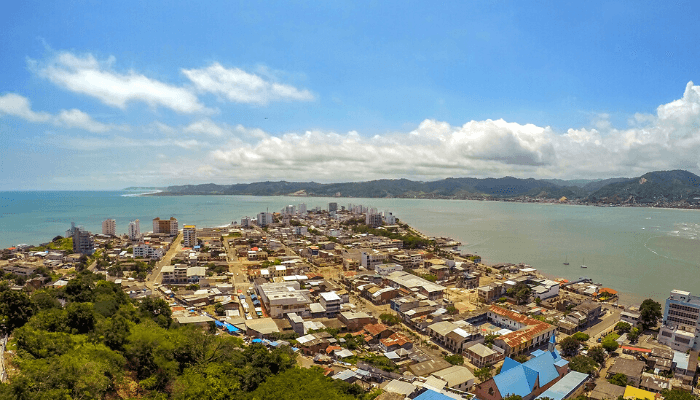
Also known as the Antonio de Caraquez, this port lies 550 kilometres south of the Panama Canal. A small roadstead port, it mainly exports castor seeds. The port city is situated on a sandy peninsula near the mouth of the river Rio Chone and is a famous tourist destination for locals as well as international travellers.
It has a huge archaeology museum, beaches, traditional houses and stone-cobbled streets. Till the 19th century, it was the largest port in the country, however sand erosion and silting led to its downfall as a major port of the medieval period.
There is a golden sand beach and a small resort hotel in the port city famous for its handicraft lane selling wide textured handmade paper, postcards, souvenirs, flowers etc. The local restaurants offer a taste of real Ecuadorian cuisine. A famous excursion to the Isla Corazon allows tourists to view the frigate bird colonies in the mangrove forests.
The main economic activity of the region is breeding shrimp in more than 7000 hectares of cultivated pools near Chone bay. A fairly new business, it generates considerable amounts of revenue and boosts the local economy. The port has a shrimp processing plant and 8 refrigerated warehouses.
6. Port of San Lorenzo
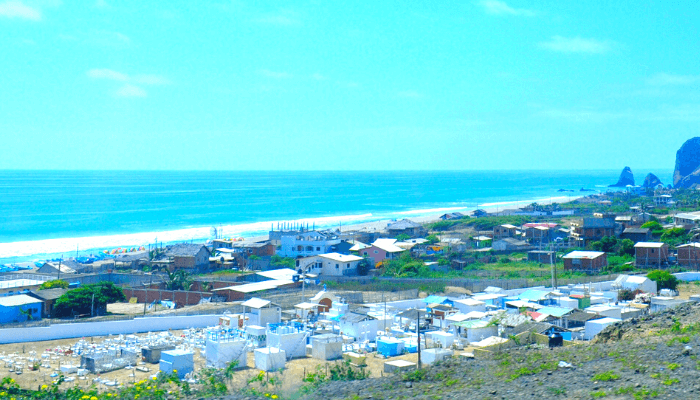
San Lorenzo port lies on the northern coastline of Ecuador around 18 kilometres from the border of Colombia. It was linked to the Ibarra city via railways in the 1900s which led to its growth as a major facility known for shipping balsa wood and tagua.
It has a natural harbour and is close to the Bolivar canal. The port has two wharves for accommodating pleasure crafts and fishing vessels apart from barges carrying timber. Ships weighing up to 5000 DWT with a draught of 6.6 m can be anchored at the harbour.
A hidden gem, this town is perfect for nature lovers as it includes many small fishing villages, mangroves, tropical rainforests with rare flora and fauna, cliffs and a few unexplored beaches.
7. Port of La Libertad
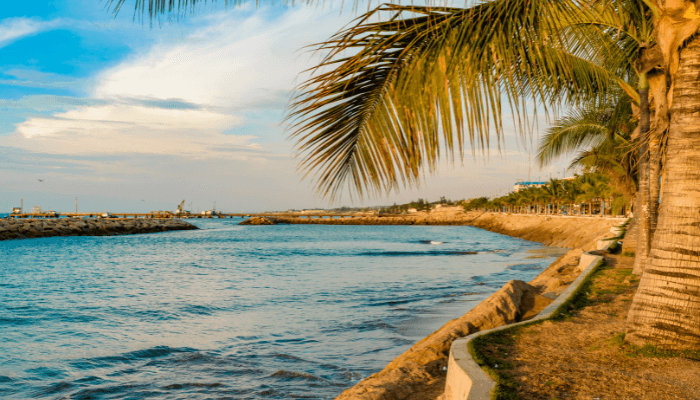
La Libertad port is located in the southwestern part of the country on the headland near the Gulf of Guayaquil. It consists of a CBM lying 2 nautical miles offshore, connected to the oil refinery by a network of pipelines and numerous oil jetties operated by private companies utilised for exporting petroleum, salt, sulphur and pitch. Bunkering services for Capesize vessels are provided. The port is frequented by 170 ships weighing 40,000 DWT with a 200 m LOA and an 11 m draught.
It was a principal port in the late 19th and early 20th centuries exporting Balsa wood and is still an important fishing harbour. The regional economy is dependent on raising livestock and growing cotton, sugarcane and other cash crops.
8. Port of Salinas
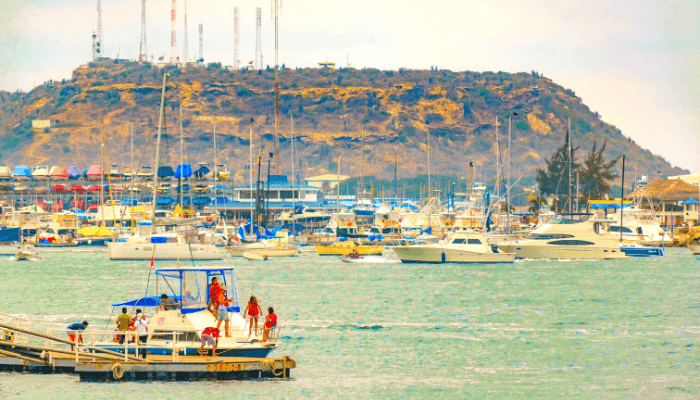
Salinas port is just 90 miles from the city of Guayaquil and is known for its bustling markets selling seafood, fruits, vegetables and local pottery. It is home to a community of Afro-Ecuadorians, descendants of slaves who were brought to Ecuador for working in its colonial plantations in the 18th and 19th centuries.
Salinas port has a 100 m long jetty which usually receives small crafts and fishing vessels. The Chipepe beach lies south of the wharf and is adjacent to the Yacht club. The city is not popular among tourists but has much scope for development.
Disclaimer :
The information contained in this website is for general information purposes only. While we endeavour to keep the information up to date and correct, we make no representations or warranties of any kind, express or implied, about the completeness, accuracy, reliability, suitability or availability with respect to the website or the information, products, services, or related graphics contained on the website for any purpose. Any reliance you place on such information is therefore strictly at your own risk.
In no event will we be liable for any loss or damage including without limitation, indirect or consequential loss or damage, or any loss or damage whatsoever arising from loss of data or profits arising out of, or in connection with, the use of this website.
Disclaimer :
The information contained in this website is for general information purposes only. While we endeavour to keep the information up to date and correct, we make no representations or warranties of any kind, express or implied, about the completeness, accuracy, reliability, suitability or availability with respect to the website or the information, products, services, or related graphics contained on the website for any purpose. Any reliance you place on such information is therefore strictly at your own risk.
Do you have info to share with us ? Suggest a correction
Latest Maritime Knowledge Articles You Would Like:
Subscribe To Our Newsletters
By subscribing, you agree to our Privacy Policy and may receive occasional deal communications; you can unsubscribe anytime.















